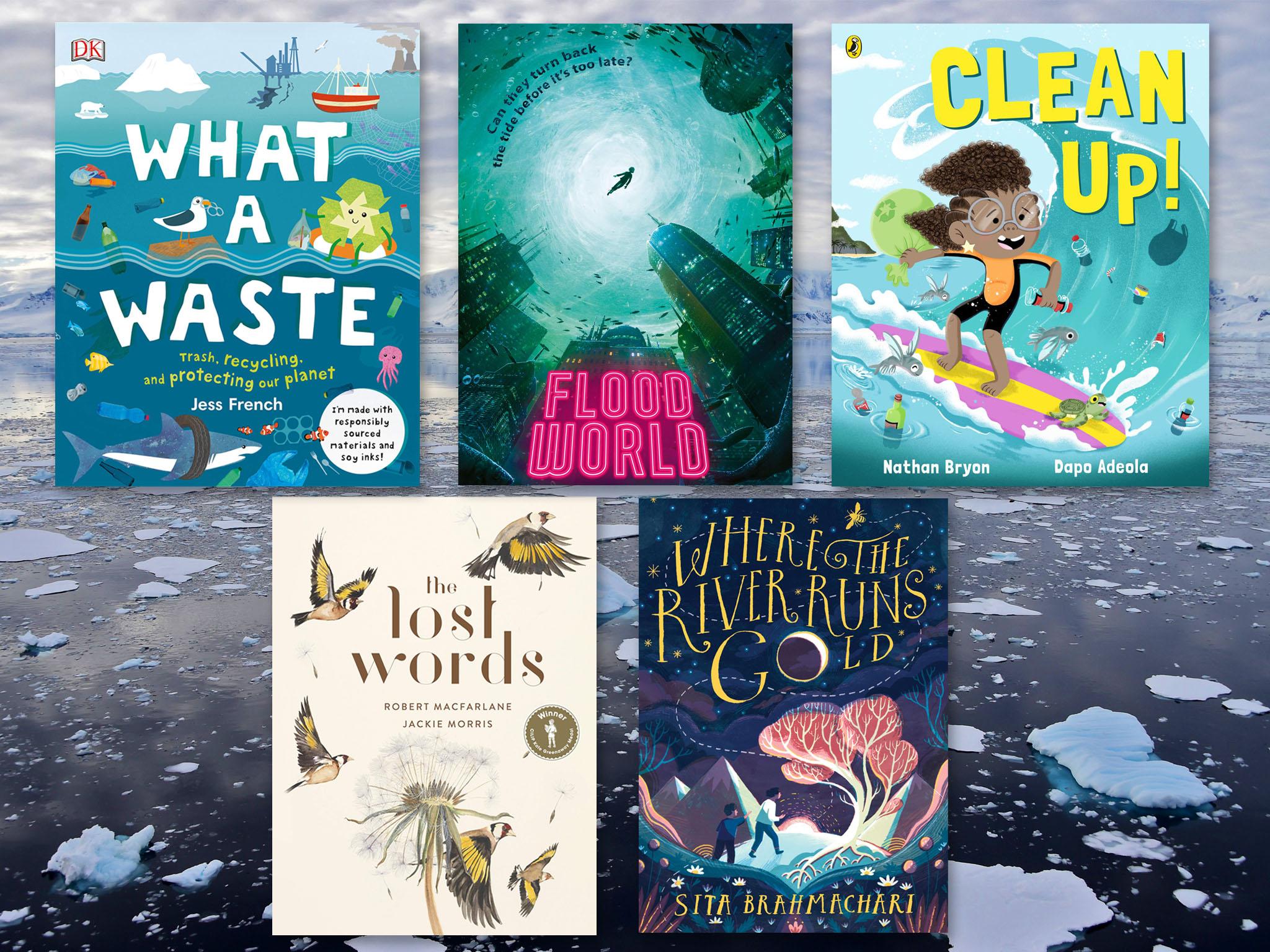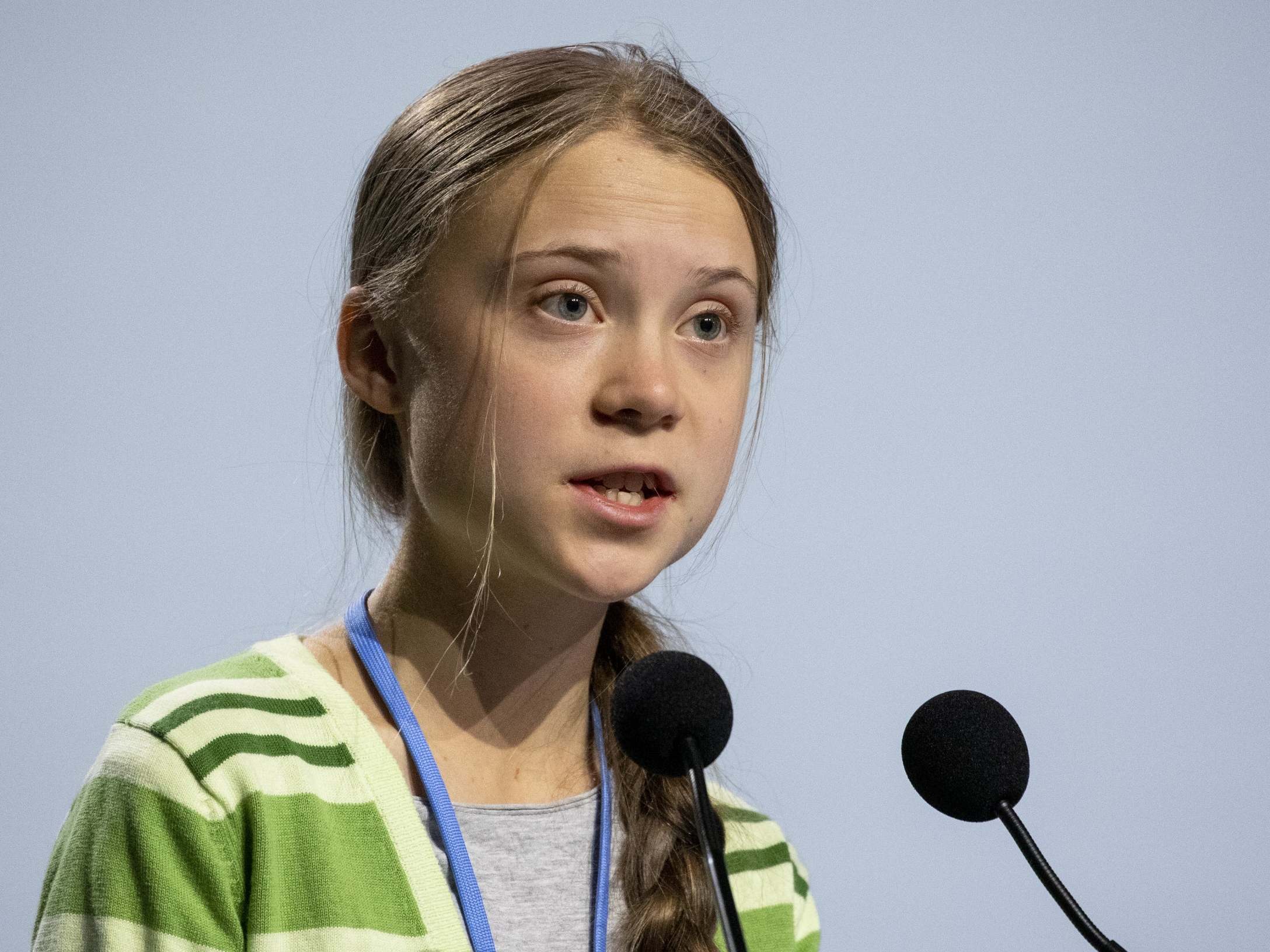How can we talk to children about the climate crisis without painting it all black?
The climate crisis is raging through children’s literature like a forest fire, writes Nicola Skinner. But how do we talk about the damage done to the planet by humanity, without making children distrust that humanity?

Your support helps us to tell the story
From reproductive rights to climate change to Big Tech, The Independent is on the ground when the story is developing. Whether it's investigating the financials of Elon Musk's pro-Trump PAC or producing our latest documentary, 'The A Word', which shines a light on the American women fighting for reproductive rights, we know how important it is to parse out the facts from the messaging.
At such a critical moment in US history, we need reporters on the ground. Your donation allows us to keep sending journalists to speak to both sides of the story.
The Independent is trusted by Americans across the entire political spectrum. And unlike many other quality news outlets, we choose not to lock Americans out of our reporting and analysis with paywalls. We believe quality journalism should be available to everyone, paid for by those who can afford it.
Your support makes all the difference.I used to be a literacy helper at a local primary school. Every Tuesday I’d wedge myself into a small plastic chair and listen to young children as they read aloud. But sharing a book was only part of the job. Other responsibilities included wiping noses and acting as a general first responder to any questions. Even if their questions weren’t necessarily framed as such – they’re not always, with young children – I was still expected to come up with an answer. It was a tough gig, but I enjoyed it, on the whole.
One summer, a boy suddenly stopped reading, and told me what he’d seen on the telly that morning. “There was a fire in a tall building,” he said. “I watched it at breakfast.” I realised he was referring to the Grenfell Tower tragedy, the desperate footage of which he must have seen before school. He looked at me expectantly. This, I knew, was my turn to speak.
But how? I felt like I was playing a loaded game of pass the parcel. What words could I wrap around this story before I handed it back to him? When it comes to disaster, what’s the right way to talk about it to a child? There’s a balance to be struck between protecting their innocence and honouring their right to know. And just as something in his book prompted that young boy to consider the world, so children’s literature as a whole can help young readers process unsettling real events.
In itself, this challenge is not unique. We don’t have to look far to find precedents of authors responding in real time to international horror. In the 1940s, Elinor Brent-Dyer responded to the Second World War by writing The Chalet School in Exile for her previously cosy boarding school series. The Snowman author Raymond Briggs’ 1982 picture book When the Wind Blows tackled the imminent threat of nuclear attack, while more recently, Catherine Bruton’s No Ballet Shoes in Syria and Onjali Q Rauf’s The Boy at the Back of the Class put the international refugee crisis at the heart of their stories. This October, Kate Milner’s picture book It’s a No Money Day dealt with food poverty in today’s Britain. Don’t be misled by the classification – beneath their colourful covers, children’s books can deal skilfully with very grown-up themes.
Of course, there’s a strong argument that children’s books should remain free from adult concerns. There must be stories children can escape to and play within. Fortunately, children’s publishing is full of wonderful books, which meet this need perfectly. But books aren’t written in a vacuum. The shock of any tragedy will shape the art produced within that time – and children’s literature is not exempt from that. And occasionally, a tragedy will come along that is so vast, and on such a global scale, that the force of it will change every narrative eventually. And we’re right in the middle of one. When it comes to children’s books, the climate crisis looks set to lead from the front in 2020.
No sane person would deny we’re facing the worst levels of environmental devastation yet, and that awareness has raged through children’s literature like a forest fire. Florentyna Martin, children’s buyer at Waterstones, has seen a huge rise in “eco kid lit”.
“This year, it has dominated illustrated reference books and practical guides for children,” she says, “with books like What a Waste by Jess French. One of the leading books of 2019 has been Greta Thunberg’s collection of speeches, No One Is Too Small to Make a Difference, and next year I can see the climate crisis distilled into more fiction and picture books, like Clean Up by Dapo Adeola and Nathan Byron.”
She points out that even household names will be tapping into the conversation, with Peppa Pig and the Mr Men series releasing eco titles.

In some cases, the climate crisis has created hybrid genres, the likes of which feel completely new within children’s publishing; such as Jackie Morris and Robert Macfarlane’s Lost Words, an illustrated picture book, ostensibly for children, yet which at times reads like an elegy. In it, there are “spell poems” written specifically to “summon back what has vanished” – in this case, once well-known words for wildlife that are slowly vanishing from most children’s vocabularies (and therefore knowledge), such as kingfishers and otters. And perhaps most visibly, the climate crisis is shaping and redefining middle-grade fiction – that highly populated market for nine- to 12-year-olds. What’s fascinating is how.

Watch Apple TV+ free for 7 days
New subscribers only. £8.99/mo. after free trial. Plan auto-renews until cancelled

Watch Apple TV+ free for 7 days
New subscribers only. £8.99/mo. after free trial. Plan auto-renews until cancelled
It isn’t surprising that dystopia seems to be leading the way: faced with the bleakness of what’s really happening, it seems perfectly reasonable. Visions of ecological apocalypses have really gathered momentum this year, with Sita Brahmachari’s Where the River Runs Gold a notable example. In this novel, all bees have become extinct, and so pollination is done by hand, on sinister pollination farms, by unwitting children. And there are many more besides; Tom Huddleston’s Floodworld, Bren MacDibble’s The Dog Runner, Julia Green’s The House of Light, and Nicola Penfold’s forthcoming debut, Where the World Turns Wild, all contain unsettling versions of our planet in free fall.
The artistic merit of these critically acclaimed books is not in doubt, but when seen collectively, they do pose a question: when it comes to climate change, are we in danger of terrifying children? Is it possible to talk about the damage done to the planet by humanity, without making children distrust that humanity? Could we be fostering an innate misanthropy within children?
Scott Evans – primary school teacher, host of the hugely popular online Primary School Book Club, and longlist book judge for the Blue Peter Book Awards – agrees it’s a complicated time. “There’s so much dystopian eco-fiction out there, but it feels right,” he tells me. “Children nowadays are exposed to extreme environmental content through the news, and the impression I get as a teacher is that my class actively want those types of books. They seem to have an intellectual approach to the climate crisis and in many ways those books accelerate their thought processes and inspire them to form their own decisions.”
Dystopian fictions have long been used by writers as a way of challenging and inspiring humanity, and at their best, as Scott believes, they can encourage readers to attempt to reverse the dangers of their time. But is there a risk that too much too soon can have the opposite effect and desensitise the minds of impressionable children, or even lead them to believe that there is no other outcome for our planet? Could there be a slightly macabre appetite at play here? Might children’s books, in response to the ever-worsening news, become a story-telling race to the worst-case scenario, because of the dark vicarious thrills it offers along the way? Or is that just a dystopian way of looking at dystopia?
Perhaps the answer lies in variety, and balance. The market contains enough diversity to keep the conversation hopeful. MG Leonard’s Beetle Boy series, Lightning Mary by Anthea Simmons and The Closest Thing to Flying by Gill Lewis all have an emphasis on natural history, and doable activism. There are also some refreshing alternatives of the narrative voice: Emma Read’s Milton the Mighty, for example, is told entirely from the perspective of a tiny house spider, who has to fight for survival in a world that wants to exterminate him. Books like this, which deftly and lightly engage young readers with ideas about local, grass-roots conservation, make essentially the same point about our natural world as Lost Words – love it or lose it – and work brilliantly side by side with stories with a darker, more world-wide theme.
It is worth being thoughtful, too, about where the critical gaze is directed. This idea of where to look within this canon is crucial. If climate change is always presented as a done-and-dusted irreversible disaster, the solution might feel out of reach. But books written with a clear-eyed scrutiny on the practices, corporations and consumer habits that have contributed to the mess we’re in might at least provide this generation with the idea of accountability.
One thing’s for sure, while children used to chase smugglers through sea coves, over the next few years the baddies in children’s literature are bound to change into more recognisable ogres. And modern readers’ sensibilities will be changed permanently by the narratives around us. Even a classic adventure story like Katherine Rundell’s The Good Thieves, which doesn’t have an explicitly environmental theme, can be read implicitly as having one, concerned as it is with children’s legacies being stolen by rich villains. In the future, our perception of stories may eventually acquire a permanent eco filter.
Perhaps the climate crisis is forcing children’s books to grow up too fast. Perhaps there will be books written with narratives we can’t even imagine, as writers attempt to speak the unspeakable, adapt to events we cannot yet comprehend. But the alternative – of acknowledging nothing, of producing work that bears no resemblance to the changing world – feels far more frightening.
Besides, it’s not all bad. Taken collectively, what all these books reveal, in their many tonal variations, is not just fear and grief but a wild, limitless hope. They can all be read as love letters to the world, and a rallying cry to not give up. Just the very fact that they are being written, and published, and read reveals, at least, that amongst all the uncertainty, people still believe the world is worth saving. And that might be the one plot twist that saves us all.
Nicola Skinner is a children’s author
@skinnerwrites
Join our commenting forum
Join thought-provoking conversations, follow other Independent readers and see their replies
Comments